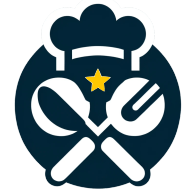4 Food Trends that Don’T Live Up to the Hype and Why They’Re Overrated
With the ever-shifting landscape of culinary fads, it's crucial to sift through the noise for genuine substance. This article delves into popular food trends and reveals expert insights on why some don't live up to their hype. Uncover the reasons behind the overrated buzz and make informed choices about what's really worth the plate space.
- 3-Ingredient Recipes Rarely Deliver
- Oat Milk Is Overhyped
- Gold-Covered Food Lacks Substance
- French Toast Trends Are Overboard
3-Ingredient Recipes Rarely Deliver
We've all seen the hype around 3-ingredient baked goods on social media, promising simplicity and deliciousness. Sadly, these recipes rarely deliver. Having fallen into the trap a few times with three-ingredient cheesecakes or brownies, I've grown pretty resentful of the wasted time and ingredients! While these concoctions often look stunning in photos and videos, the texture is usually off, and the flavor feels one-dimensional because essential ingredients are left out. Baking is a science, and while these recipes may seem fun, they almost always fall flat. I'd much rather spend a few extra minutes creating something truly satisfying and balanced.

Oat Milk Is Overhyped
As a food enthusiast with a critical palate, I'm calling out the oat milk trend as a massively overhyped culinary phenomenon that doesn't deserve its current darling status in the alternative milk market.
Oat milk sounds like a revolutionary health drink, but it's essentially a marketing triumph with questionable nutritional credentials. Unlike almond or soy milk, oat milk offers minimal protein, often contains added sugars, and requires significant processing that strips away most of the grain's original nutritional value.
The environmental argument touted by oat milk proponents isn't as straightforward as they claim. While oats might require less water than almond production, the industrial processing and transportation of these milk alternatives often create a substantial carbon footprint that negates their supposed ecological advantages.
Taste-wise, oat milk is disappointingly bland - a watery, slightly sweet liquid that lacks the richness of dairy or the nutty complexity of other plant-based alternatives. Its popularity seems more driven by Instagram aesthetics and wellness marketing than actual culinary merit.
What truly frustrates me is how quickly consumers have embraced this trend without critically examining its actual nutritional and sensory value. It's a perfect example of how clever branding can transform a mediocre product into a must-have lifestyle statement.

Gold-Covered Food Lacks Substance
Gold-covered food. It's the ultimate "look at me" flex, but let's be real—eating gold adds zero flavor, nutrition, or value beyond an Instagram post. It's all about the flash and nothing about the substance. I mean, why pay $1,000 for a gold-dusted burger when you could spend that on an actually incredible meal? Food should wow your taste buds, not just your followers. Gold belongs on jewelry, not pizza.

French Toast Trends Are Overboard
French toast is a breakfast staple, but it's arguably overvalued as a trendy food trend. It can be good, but all this publicity around upscale versions with crazy toppings like edible gold or stuffed versions is a bit overboard. French toast is, at its base, bread drenched in egg and fried, tasty but not innovative. These endless re-inventions don't always show what is simplicity that comforts. There are variants that are so crammed with sugar and other fillings that the food becomes less about taste and more about appearance. I am drawn to simple ingredients, and this over-the-top craze does not make sense to me.


